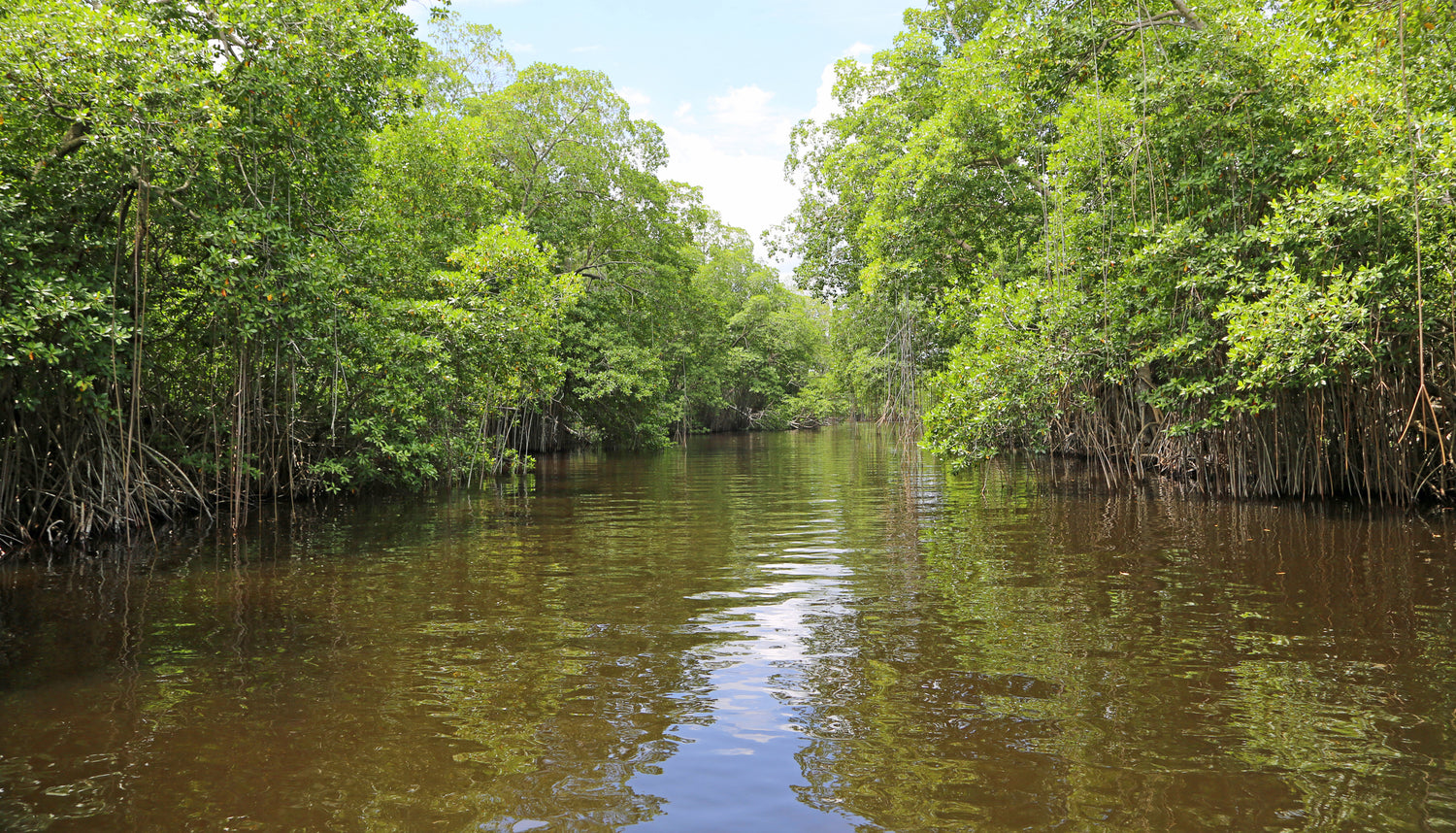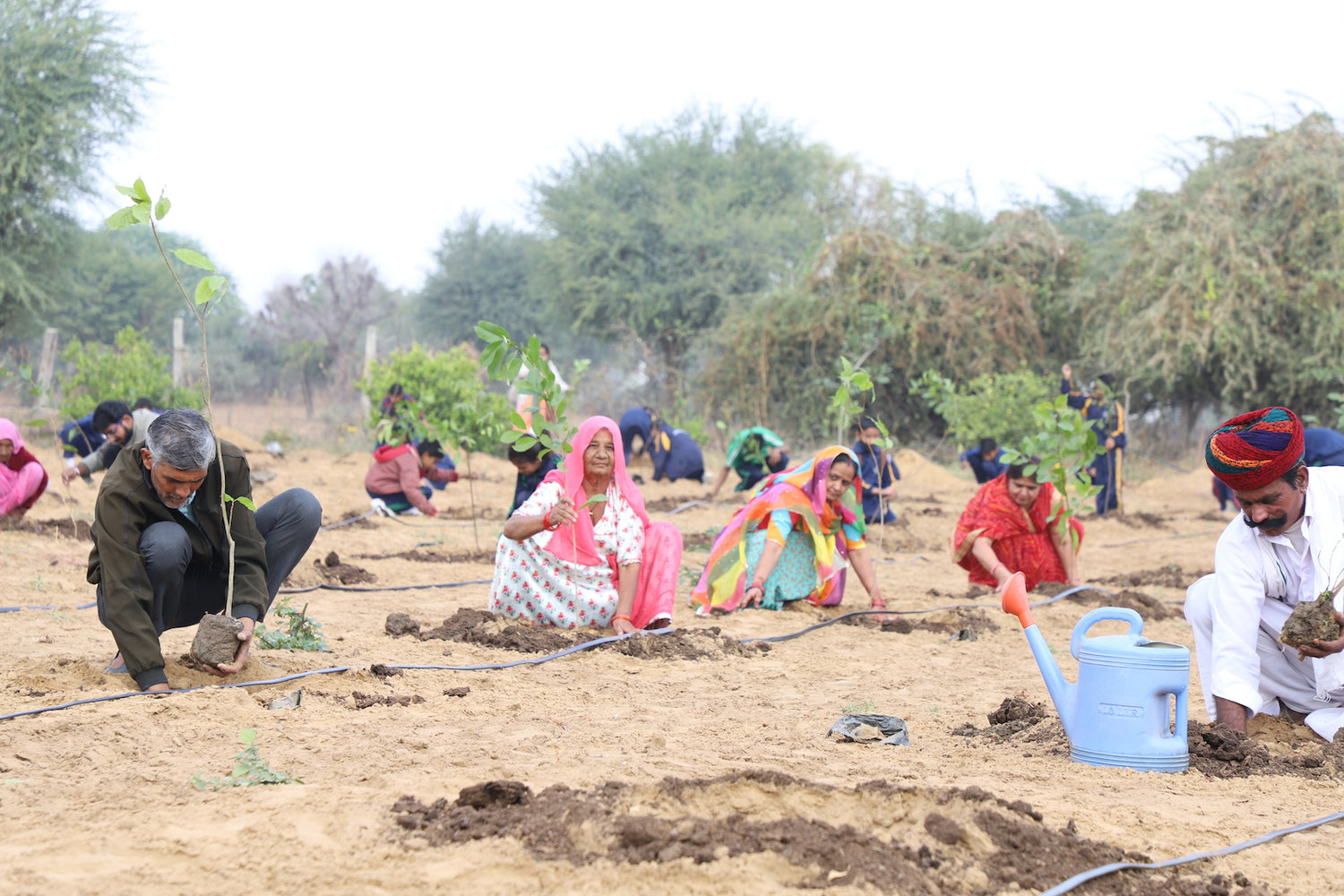Mangroves in Andaman and Nicobar Islands: A Tropical Biodiversity Wonderland
Mangroves in the Andaman and Nicobar Islands represent one of the most pristine and biodiverse ecosystems on the planet. Covering approximately 13% of Read more
Connect with us
-
👥 Corporates
If you are looking for:
- 🌲 Tree Plantation Events
- 📊 CSR Projects
📧 corporate@growbilliontrees.com
📞 +91 9699723523
💬 +91 9325931304 WhatsApp (Only)
🕒 Mon - Sat | 10am - 7pm IST
-
🧩 Tree Plantation NGOs
If you are looking for:
- 💰 Financial Assistance
- 🤝 Operational Support
📧 support@growbilliontrees.com
📞 +91 9699723523
💬 +91 9325931304 WhatsApp (Only)
🕒 Mon - Sat | 10am - 7pm IST
-
🌼 Individuals
If you are looking for:
- 👥 Group Tree Plantation Drive
- 🌳 Bulk Tree Plantation
📞 +91 9699723523
💬 +91 9325931304 WhatsApp (Only)
🕒 Mon - Sat | 10am - 7pm IST
Trending
Trees for Corporates
Mangroves in Andaman and Nicobar Islands: A Tropical Biodiversity Wonderland
Mangroves in the Andaman and Nicobar Islands represent one of the most pristine and biodiverse ecosystems on the planet.
Covering approximately 13% of India’s total mangrove area, these tropical forests thrive in the islands’ estuaries, creeks, and intertidal zones, creating a vibrant ecological mosaic.
Known for their critical role in protecting coastlines, supporting biodiversity, and sustaining livelihoods, these mangroves are invaluable for both environmental and economic stability.
Mangroves have been central to the history of the Andaman and Nicobar Islands for centuries. Indigenous tribes, such as the Great Andamanese and the Onge, relied on mangroves for their sustenance, including fishing, hunting, and gathering.
British colonial records also highlight the importance of these forests in providing timber for boats and as a natural barrier against tidal surges.
Despite their resilience, modern threats such as deforestation, rising sea levels, and cyclones have necessitated focused conservation efforts.
The mangroves of the Andaman and Nicobar Islands provide vital ecosystem services. They act as natural buffers, absorbing storm surges, cyclones, and tidal waves, which is crucial for a region frequently hit by natural disasters.
Scientific studies reveal that these mangroves store carbon at rates comparable to tropical rainforests, making them essential in combating climate change. They are also nurseries for fish, crabs, and shrimp, directly supporting the islands’ fisheries and aquaculture.
- Biodiversity Hotspot: The islands’ mangroves are home to unique species like saltwater crocodiles, mudskippers, and rare birds such as Nicobar pigeons.
- Cyclone Resilience: During the 2004 tsunami, mangroves played a critical role in reducing damage to coastal villages.
- Largest Mangrove Cover in India’s Islands: The Andaman and Nicobar Islands house nearly 1,000 square kilometers of mangroves, contributing significantly to India’s ecological wealth.
- Tourist Attraction: Mangrove boardwalks and kayaking tours in places like Baratang offer eco-tourism opportunities that combine adventure with conservation awareness.
Despite their resilience, the mangroves in the Andaman and Nicobar Islands face significant threats. Urbanization, deforestation, and illegal logging are eroding mangrove areas.
Rising sea levels and increasing salinity due to climate change pose additional challenges, while tourism-related activities sometimes lead to habitat destruction. These factors underline the need for sustainable management and active restoration efforts.
Grow Billion Trees is at the forefront of mangrove conservation in the Andaman and Nicobar Islands. By combining community engagement, advanced technology, and strategic partnerships, the organization is ensuring these ecosystems are preserved and expanded.
Collaborations:
- Partnering with the Andaman and Nicobar Forest Department and local NGOs to implement mangrove restoration projects.
- Collaborating with research institutions to study biodiversity and develop sustainable management practices.
Execution Strategies:
- Establishing nurseries for native mangrove species like Rhizophora mucronata and Bruguiera gymnorrhiza.
- Conducting plantation drives in degraded areas, especially in tsunami-affected zones.
- Using drones and satellite imagery to monitor mangrove health and track restoration success.
Awareness and Advocacy:
- Hosting workshops for local schools, fishing communities, and tourism operators to emphasize the importance of mangroves.
- Promoting sustainable tourism practices like mangrove kayaking and eco-friendly boardwalks.
- Running social media campaigns to showcase the ecological and economic importance of these tropical forests.
Restoration Post-Tsunami: Grow Billion Trees has restored over 200 hectares of mangroves in tsunami-affected regions, providing long-term coastal protection.
Community-Led Conservation: Indigenous tribes and local communities are partnering with Grow Billion Trees to restore mangroves while preserving traditional practices.
Eco-Tourism Development: Collaborating with tour operators, Grow Billion Trees promotes eco-tourism activities that raise awareness and generate funds for conservation.
By 2030, the mangroves of the Andaman and Nicobar Islands could serve as a global model for tropical biodiversity conservation, supporting livelihoods, mitigating climate change, and enhancing disaster resilience.
Strategic restoration efforts will expand their role as ecological and economic assets.
The mangroves in the Andaman and Nicobar Islands are more than just tropical forests—they are lifelines for biodiversity, climate resilience, and local economies.
Protecting them is essential for the islands’ environmental health and sustainable development. Grow Billion Trees is leading efforts to restore and preserve these tropical treasures through innovative approaches, community participation, and long-term partnerships.
With collective action, these mangroves will continue to thrive as a testament to nature’s resilience and humanity’s commitment to its conservation.
Baratang Mangroves
These mangroves are a scenic marvel, offering tranquil kayaking experiences and unique biodiversity. They’re where adventure meets conservation in the heart of the Andamans.
Mangroves and Tsunami Protection
During the 2004 tsunami, the mangroves acted as nature’s barriers, absorbing much of the impact and saving coastal villages from greater devastation.
Biodiversity in Andaman Mangroves
From saltwater crocodiles to rare Nicobar pigeons, these mangroves are a biodiversity hotspot, brimming with life that’s both beautiful and essential.
Mangroves as Carbon Sinks
The mangroves of Andaman and Nicobar store carbon at impressive rates, fighting climate change while standing tall against rising sea levels.
Threats to Andaman Mangroves
Illegal logging, urbanization, and salinity changes are gnawing at these ecosystems, making conservation efforts more critical than ever.
Mangroves and Fisheries in the Islands
Acting as nurseries for shrimp and fish, these mangroves sustain local fishing industries while ensuring biodiversity thrives underwater.
Grow Billion Trees in Andaman
This initiative is restoring degraded mangrove areas and empowering communities to balance traditional knowledge with sustainable practices.
Mangroves and Tourism in the Islands
Eco-tourism activities like kayaking and boardwalks offer tourists a serene escape while promoting mangrove conservation awareness.
Community Role in Mangrove Conservation
Local tribes and fishing communities play a vital role in mangrove restoration, partnering with Grow Billion Trees for sustainable practices.
Mangroves and Cyclone Protection
These mangroves shield the islands from cyclones and storm surges, proving that nature’s design is the best defense against extreme weather.
Mangroves and Water Quality
Acting as natural filters, these mangroves trap sediments and pollutants, keeping the surrounding waters pristine for marine and human life.
Mangroves and Climate Resilience
Adapted to rising seas and changing salinity, these mangroves are nature’s climate warriors, offering lessons in resilience and adaptability.
You may like
Corporate Plantations
FAQ
What are the mangroves in the Andaman and Nicobar Islands?
These mangroves are tropical biodiversity hubs, protecting coastlines, supporting marine life, and storing carbon. Grow Billion Trees actively restores and safeguards these natural wonders.
Why are the islands’ mangroves important?
They prevent erosion, mitigate cyclones, and sustain fisheries while acting as carbon sinks. Grow Billion Trees ensures their conservation to secure these vital ecological services.
How do mangroves protect against tsunamis?
Mangroves absorb the energy of tidal waves and storm surges, reducing their impact on coastal areas. Grow Billion Trees strengthens this natural protection with extensive restoration efforts.
What wildlife thrives in these mangroves?
From saltwater crocodiles to mudskippers and rare Nicobar pigeons, the mangroves are brimming with life. Grow Billion Trees works to preserve these vibrant habitats for biodiversity.
How do mangroves support local livelihoods?
They sustain fishing and aquaculture while attracting eco-tourists. Grow Billion Trees restores these ecosystems to support communities and balance development with conservation.
What threats do Andaman’s mangroves face?
Illegal logging, pollution, and rising sea levels threaten these ecosystems. Grow Billion Trees addresses these challenges with reforestation and community-driven conservation projects.
What is Grow Billion Trees doing for these mangroves?
We plant mangroves, engage local tribes, and monitor ecosystems using advanced technology to ensure the long-term health of these tropical forests.
How do the islands’ mangroves combat climate change?
They store significant amounts of carbon, making them climate warriors. Grow Billion Trees scales up mangrove restoration to maximize their climate benefits.
Why are Baratang mangroves special?
Baratang’s mangroves are scenic and biodiverse, offering kayaking adventures and eco-tourism opportunities. Grow Billion Trees actively restores degraded areas in this region.
What makes these mangroves unique?
They thrive in a tropical island environment, hosting rare species and acting as shields against natural disasters. Grow Billion Trees ensures their uniqueness is preserved through sustainable practices.
How do mangroves benefit eco-tourism?
Mangrove kayaking and boardwalks attract tourists while raising awareness about their importance. Grow Billion Trees promotes sustainable tourism to balance exploration with conservation.
Can communities help conserve these mangroves?
Absolutely! Local tribes and fishing communities are key to their protection. Grow Billion Trees empowers them with training and resources to lead conservation efforts sustainably.























